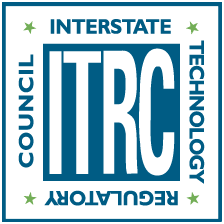Please complete the following questions to view your optimization potential results. Note, results will not generate unless all questions have been answered.
| Optimization Potential Questionnaire | |||
| # | Questions | Responses | |
| 1 | Have remedial alternatives other than pump and treat been ruled out as potential alternatives or additions to the remedial strategy? | |
|
| 2 | Have regulatory drivers or exposure scenario changed and is pump and treat necessary to achieve the revised RAOs? | |
|
| 3 | ” Is the CSM for the site current with respect to any of the following: – New/Different COPCs/COCs – Presence/absence of NAPL – Reduced or increased source mass – New source(s) (on-site or upgradient) – New or significantly changed plume characteristics (location, extent, morphology, bulk plume behavior/metrics/stability) – Contaminant fate and transport (COPC/COC concentrations, mass transport properties, biodegradation rates, diffusion-back-diffusion; etc.) – Hydrogeologic conditions (groundwater elevations; flow direction, gradient, horizontal and/or vertical components of gradient; gaining/losing stream conditions) – Receptors (private, municipal, and/or industrial water supply wells) – Potential exposure pathways” |
|
|
| 4 | Are the flow rates, concentrations, pressures, drawdown, etc. consistent with the values expected in design? | |
|
| 5 | Is the system currently achieving ROD objectives (i.e. source reduction or containment ) | |
|
| 6 | For mass recovery remedies, has optimization been conducted to maximize recovery rates? | |
|
| 7 | For cases where all source areas have been defined and eliminated/isolated from downgradient portion of plume, is the downgradient portion of plume on track for ROD restoration RAOs? | |
|
| 8 | For cases where all source(s) have not been defined or have not been eliminated/isolated from downgradient portion of plume, is the downgradient portion of plume on track for ROD restoration RAOs? | |
|
| 9 | (For Superfund Sites): Is the anticipated transition from EPA to state ownership (or federal ownership to state/private ownership) of the project more than 10 years from now, or if less, has the remedy been declared Operational and Functional (O&F)? | |
|
| 10 | For mass recovery remedies, are unit costs for recovered mass acceptable to operators and regulators? | |
|
| 11 | All other technical considerations aside, are estimated, current or projected costs of the system acceptable to all stakeholders and sustainable for the life cycle of the project? | |
|
| 12 | Have remedy O&M costs been decreasing? | |
|
| 13 | Has an independent review of operating costs and performance been performed? | |
|
| 14 | Is the pump and treat system operation consistently compliant with applicable permits and requirements? | |
|
| 15 | Is the pump and treat system operating safely and without health and safety incidents? | |
|
| 16 | Is the equipment well maintained in accordance with manufacturer’s recommended O&M procedures? | |
|


